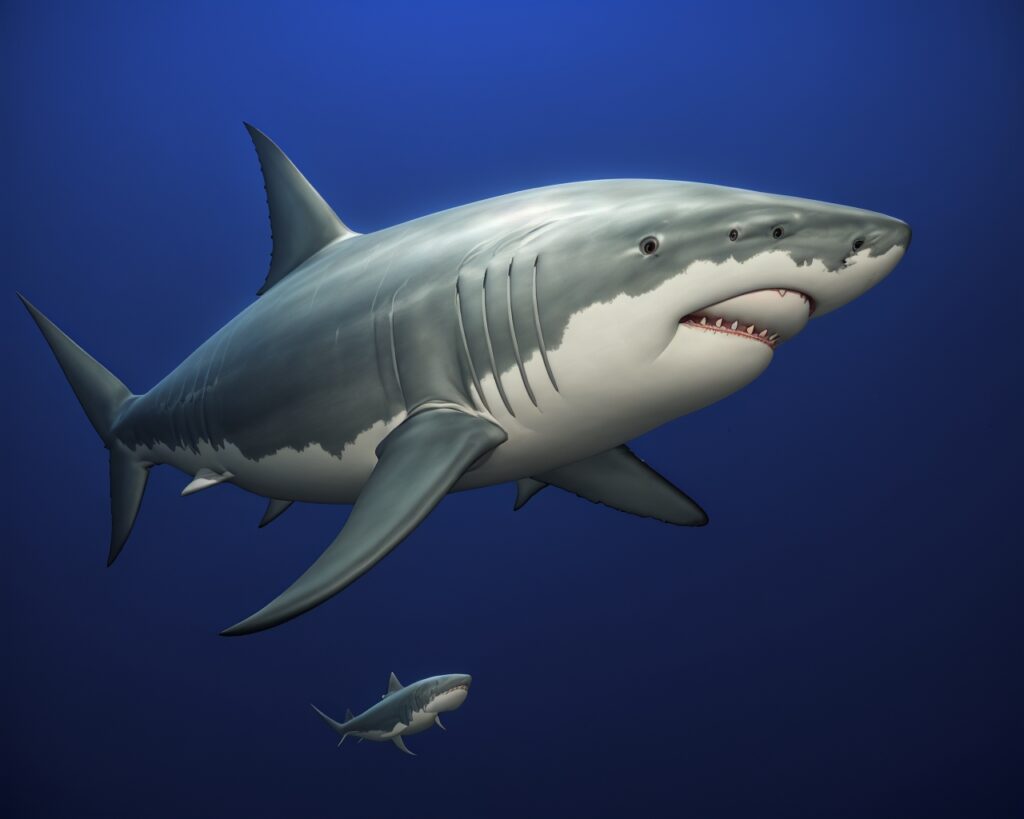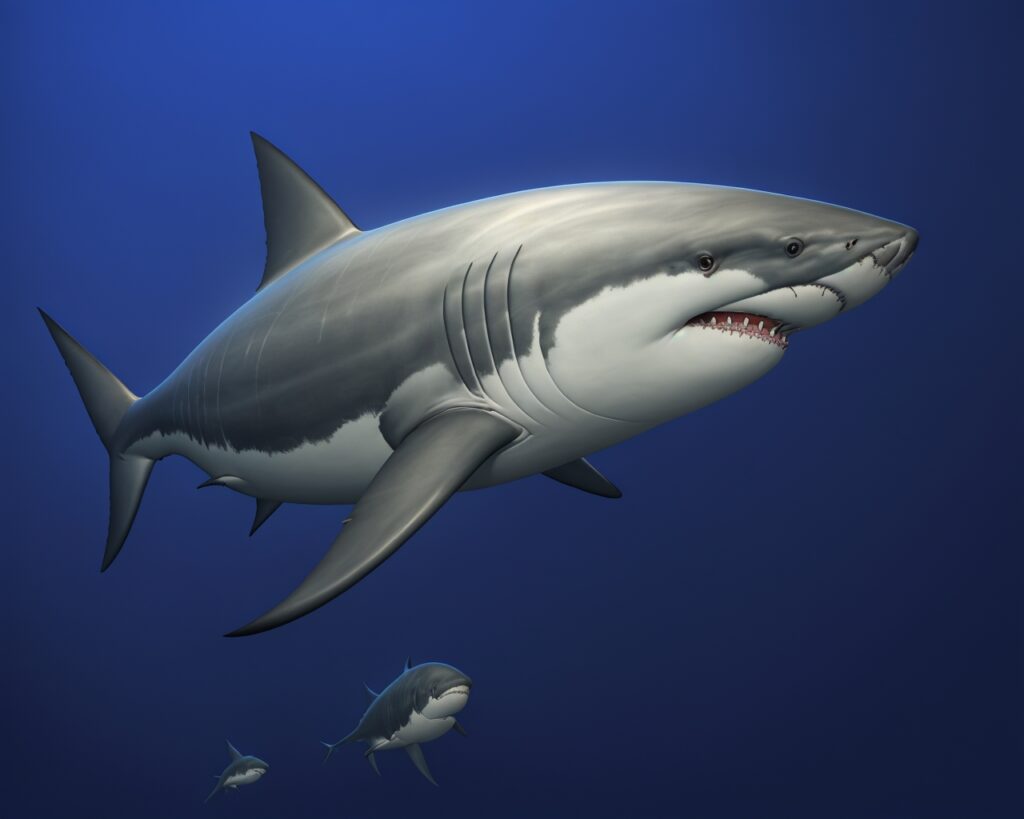The great white shark is one of the most fascinating and fearsome creatures in the ocean. Known for their size, strength, and sharp teeth, great white sharks have captured the imagination of people around the world. But how are these incredible animals classified in the world of science? In this article, we will explore the classification of the great white shark, using simple language that fifth-grade students can easily understand. We will break down the classification levels, explain the classification order, and look at the classification system used by scientists.
Key Takeaways
- Great white sharks are scientifically classified using a system that helps us understand their place in the animal kingdom.
- Classification levels include kingdom, phylum, class, order, family, genus, and species.
- The scientific name for the great white shark is Carcharodon carcharias.
- Understanding the classification of great white sharks helps us learn more about their biology and evolution.
The Basics of Classification
Before we dive into the specifics of great white shark classification, it’s important to understand what classification is and why it’s used. Classification is a system used by scientists to organize and categorize all living things. This system helps scientists communicate about different species, understand relationships between organisms, and study the diversity of life on Earth.

What is Classification?
Classification is the process of grouping organisms based on shared characteristics. This system helps scientists identify, name, and categorize species in a way that reflects their evolutionary relationships.
Why is Classification Important?
Classification is important because it helps scientists:
- Identify and name species: Each species has a unique scientific name that is recognized worldwide.
- Understand relationships: Classification shows how different organisms are related to each other.
- Study evolution: By looking at classification, scientists can learn how species have evolved over time.
The Classification System
The classification system used by scientists is called the Linnaean system, named after Carl Linnaeus, who developed it in the 18th century. This system uses a hierarchy of levels to classify organisms. These levels are:
- Kingdom
- Phylum
- Class
- Order
- Family
- Genus
- Species
Each level is more specific than the one above it, with species being the most specific level. Let’s look at each of these levels in more detail.
Classification Levels
Kingdom
The highest and most general level of classification is the kingdom. All living things are divided into several kingdoms. The great white shark belongs to the Animalia kingdom, which includes all animals.
Phylum
The next level down is the phylum. The great white shark belongs to the phylum Chordata, which includes all animals with a backbone.
Class
Within each phylum, there are different classes. The great white shark belongs to the class Chondrichthyes, which includes all cartilaginous fish (fish that have skeletons made of cartilage rather than bone).
Order
Each class is divided into orders. The great white shark belongs to the order Lamniformes, which includes mackerel sharks.
Family
Within each order, there are families. The great white shark belongs to the family Lamnidae, which includes large, fast-swimming sharks.
Genus
Each family is divided into genera (the plural of genus). The great white shark belongs to the genus Carcharodon.
Species
The most specific level of classification is the species. The scientific name for the great white shark is Carcharodon carcharias. The species name is always written in italics and includes both the genus and species name.

Classification Chart
Here is a classification chart for the great white shark:
| Level | Classification |
|---|---|
| Kingdom | Animalia |
| Phylum | Chordata |
| Class | Chondrichthyes |
| Order | Lamniformes |
| Family | Lamnidae |
| Genus | Carcharodon |
| Species | Carcharodon carcharias |
Detailed Explanation of Each Classification Level
Kingdom: Animalia
The kingdom Animalia includes all animals. Animals are multicellular, meaning they are made up of many cells. They are also heterotrophic, which means they must eat other organisms to get energy. Animals are capable of movement at some point in their lives and have specialized sensory organs that help them respond to their environment.
“Kingdom Animalia is incredibly diverse, encompassing species that range from tiny, microscopic organisms to the largest animals on Earth, all unified by certain fundamental characteristics.” – Dr. Laura Davis, Biologist.
Phylum: Chordata
The phylum Chordata includes animals that have a backbone, or vertebral column. This group includes mammals, birds, reptiles, amphibians, and fish. Chordates have a nerve cord running down their back, a notochord (a flexible rod that provides support), and gill slits at some point in their development.
“Chordates represent a major evolutionary advancement with their development of a dorsal nerve cord and a notochord, allowing for greater mobility and complex behaviors.” – Dr. Brian Collins, Evolutionary Scientist.
Class: Chondrichthyes
The class Chondrichthyes includes cartilaginous fish. These fish have skeletons made of cartilage, a flexible material that is lighter and less rigid than bone. This class includes sharks, rays, and skates. Cartilaginous fish also have skin covered in tiny tooth-like structures called dermal denticles, which help reduce drag while swimming.
“Chondrichthyes, with their cartilaginous skeletons and unique adaptations, showcase the remarkable diversity and specialization of marine life.” – Dr. Megan Harris, Marine Biologist.
Order: Lamniformes
The order Lamniformes includes mackerel sharks. These sharks are typically large and fast-swimming. They have two dorsal fins, an anal fin, five gill slits, and eyes without nictitating membranes (a transparent third eyelid). Mackerel sharks are found in oceans around the world and are known for their predatory behavior.
“Lamniformes are among the ocean’s top predators, with adaptations that make them exceptionally efficient hunters, from their powerful bodies to their acute senses.” – Dr. John Lewis, Shark Expert.
Family: Lamnidae
The family Lamnidae, also known as the mackerel shark family, includes some of the most well-known sharks, such as the great white shark, the shortfin mako shark, and the salmon shark. Members of this family are characterized by their large size, streamlined bodies, and powerful swimming abilities.
“The family Lamnidae contains some of the most formidable predators in the ocean, including the iconic great white shark, which plays a crucial role in marine ecosystems.” – Dr. Rebecca Turner, Ichthyologist.
Genus: Carcharodon
The genus Carcharodon includes only one living species, the great white shark. This genus is known for its large, triangular teeth with serrated edges, which are perfect for cutting through flesh. The name “Carcharodon” comes from the Greek words “karcharos,” meaning sharp or jagged, and “odous,” meaning tooth.
“Carcharodon is a genus that captures the essence of predatory efficiency, with its members’ teeth being perfectly adapted for seizing and dismembering prey.” – Dr. Steven White, Marine Biologist.
Species: Carcharodon carcharias
The species Carcharodon carcharias is the great white shark. This species is known for its size, strength, and sharp teeth. Great white sharks can grow up to 20 feet long and weigh as much as 5,000 pounds. They are apex predators, meaning they are at the top of the food chain and have no natural predators.
“The great white shark, Carcharodon carcharias, is an apex predator whose presence is vital for maintaining the health and balance of marine ecosystems.” – Dr. Lisa Moore, Shark Conservationist.
Understanding the Great White Shark’s Classification
Understanding the classification of the great white shark helps scientists learn more about its biology and evolution. By studying how great white sharks are related to other animals, scientists can gain insights into their behavior, diet, and habitat. This knowledge can also help with conservation efforts, as scientists work to protect these magnificent creatures from threats such as overfishing and habitat destruction.

Conclusion
The great white shark is a fascinating and powerful predator that has been classified using a scientific system that helps us understand its place in the animal kingdom. By learning about the different classification levels, from kingdom to species, we can gain a deeper appreciation for these incredible animals. The classification system not only helps scientists communicate about great white sharks but also allows us to study their evolution and relationships with other species. By understanding the classification of great white sharks, we can better appreciate their role in the ocean ecosystem and the importance of protecting them for future generations.
Key Terms
- Classification: The process of grouping organisms based on shared characteristics.
- Kingdom: The highest level of classification, which includes all living things.
- Phylum: The level of classification below kingdom, which includes animals with a backbone.
- Class: The level of classification below phylum, which includes cartilaginous fish.
- Order: The level of classification below class, which includes mackerel sharks.
- Family: The level of classification below order, which includes large, fast-swimming sharks.
- Genus: The level of classification below family, which includes the great white shark.
- Species: The most specific level of classification, which includes the great white shark.
Further Reading
To learn more about the great white shark and its classification, check out these resources:
- “Sharks: A Visual Guide” by Marc Dando
- “The Biology of Sharks and Rays” by A. Peter Klimley
- “Great White Shark: Myth and Reality” by Dr. Gregory Skomal
These books provide more detailed information about the biology, behavior, and conservation of great white sharks, as well as other species of sharks and rays.
